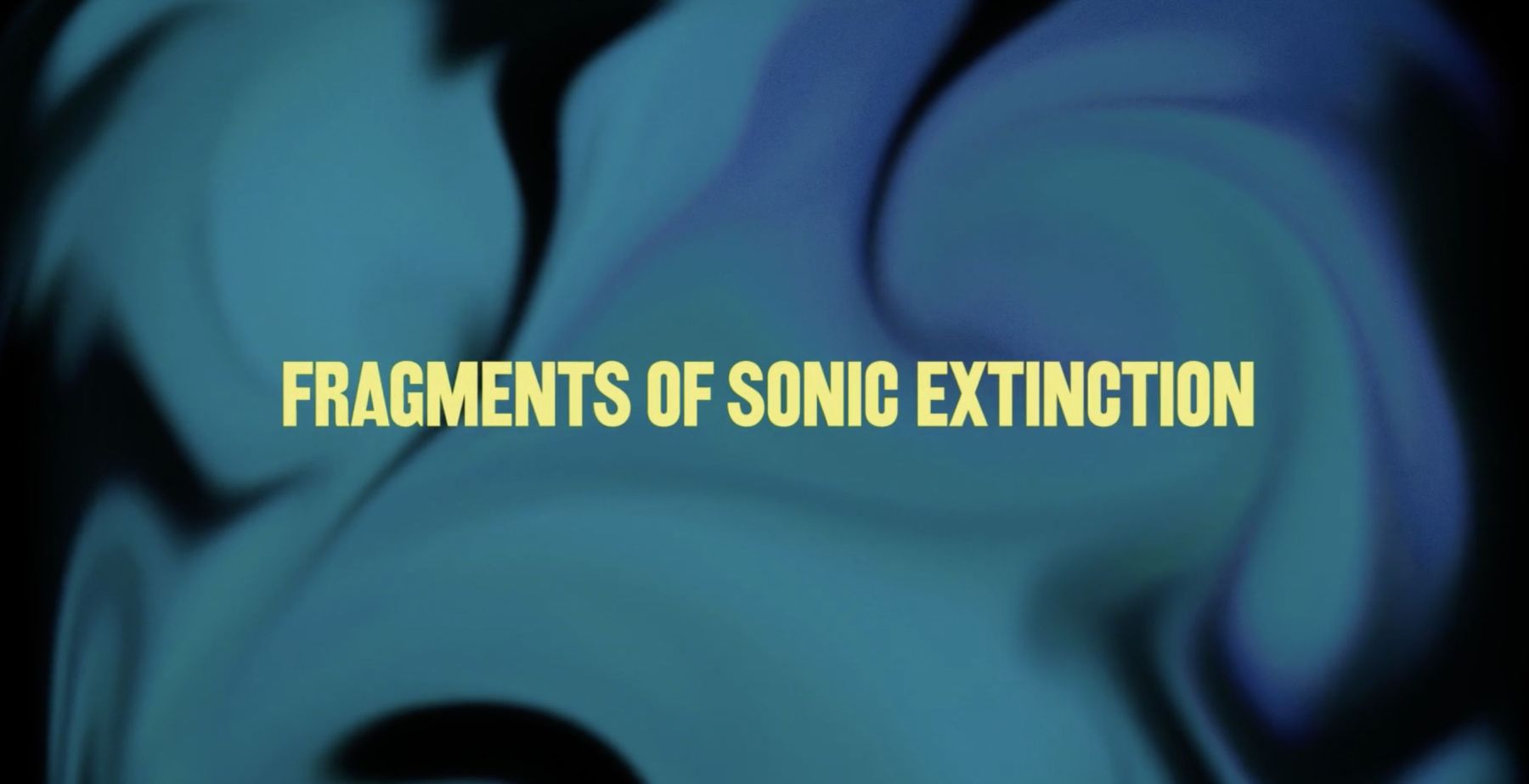Text by Luca Nasciuti
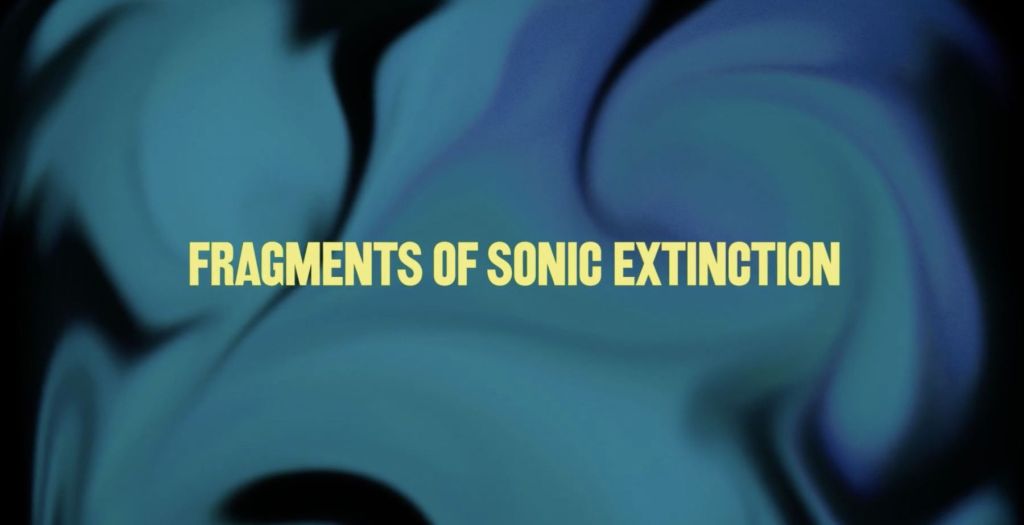
Kalas Liebfried is a multidisciplinary artist and curator working with installation and performance, exploring the sculptural and socio-political potentials of sound with a focus on ecological and post-imperial subjects, critical theory and ambient studies. He is the founder of PARA (a non-label organisation for sound) and co-organises the independent art association Rosa Stern Space. His work proposes visions and possibilities of spaces, interactions and sonic traces of our environment, making interpretation and interaction the founding values of his performances and installations.
The identity of species at risk of extinction is often the centre of his work, such as the 2019 installation and performance Ambient for a Silent Forest at Pinakothek der Moderne, Munich, where Liebfried created a physical space populated by recordings of bird calls that interact with analogue synthesised as well as instrumental (flute) sound. The immediate connection between what constitutes the real, the archival, and the built and staged environment is questioned and addressed interactively, whereby sound itself creates spaces of unclear nature. The press release from the gallery stated:
SCENARIO
1. Due to the ongoing extinction of endangered bird species, our woods will soon be immersed in silence. Then, not only ecological measures but cultural reactions as well will be necessary. It’s not a second nature, but a nature after nature that will emerge.
2. Ambient compositions sound out of nesting boxes. The pieces deal with the relations between naturally grown and consciously established forms. The acoustic experience of nature turns into a cultural-historical examination of the different protagonists.
The emphasis on the future and the premise for nature after nature demands reframing the present in light of the predictions for our future. Sound here is key to understanding such relationships in mingling with the past and present to articulate a worrying scenario in the near future.
Similarly, the 2022 performance at Musée d’Art Moderne de Paris Circulation et Extinction was staged as an interactive sound performance for solo clarinet and bird whistle that responds to the exhibition Joseph Beuys: Ligne à ligne, feuille à feuille, and dealt with the extinction of endangered bird species and the silencing of numerous natural habitats as an expected result of ecological disaster. Audiences actively participated in the performance by voicing their presence using a whistle.
Such preoccupation with the environment and our role as participants and agents of change have been translated into Liebfried’s digital curatorial project that maps imaginary soundscapes of physical locations across the globe. Fragments of Sonic Extinction is a web-based collection of artistic interpretations of the sonic environment that highlights the subjective approach to the interpretation and understanding of the process of extinction of the sonic environment. It’s designed as an interactive map that allows users to engage with artists’ propositions of endangered sonic environments.
Giving some details on the project, Liebfried walks us through how the interface works, what content users will find, and in what ways they can engage with the platform:
I developed the interface with Alexander Scharf (graphic design) and Maximilian Rauh (code) and tried to generate a display as simple as possible and almost childlike. The map looks as if the land masses are in a state about to burst; the mouse appears as a bird’s head that shifts the colourful weather in the background and snaps its beak on the various spots on the map.
The spots are set either thematically or related to the production location: Alba Vega Mulet’s contribution Re:flex:ion Orca, for example, is listed in two different locations, as the orca footage used in it was taken at two research stations (the Salish Sea and Norway). Or Alexander Liebermann’s work The Lost Song of the Kauai O’O, which transforms the last recording of the extinct bird species made in 1986 into a score, is listed on the island of Kauai and not on the production site of New York City. Thus the display already refers to the different site specificity, which oscillates between concrete and imaginary, between historical, present and future places.
Clicking on the dots takes you to the individual contributions, which are automatically played in a loop and – this is a key factor – are interactive. You can play different samples via the computer keyboard or touch display and interact with the sound work, complete it, or activate another level of content and sound aesthetics. It was essential that the visitors are given creative responsibility and that the works do not appear as closed, unchanging entities.
The individual interaction keys, in turn, produce words like “LOST” or “HOT” and refer, for example, to a change in sound caused by global warming, as in Laura Margaret Ramsey’s Cricket Alarm. In addition to this level of interaction, texts about the work and visual materials appear that expand and explain the respective themes: i.e. you can learn about the cultural significance of the long-extinct tiger on the Kalimantan Island (Nursalim Yadi Anugerah) or about the interplay between wind instruments and bird songs in cultural history (Kalas Liebfried feat. Rozenn le Trionnaire).
Fragments of Sonic Extinction is also part of a growing practice that merges cataloguing, mapping and interactivity with a focus on sonic identity, heritage and acoustic ecology, and several platforms have been developed in the past few years that collect and showcase recordings of environments, locations and places covering many areas across the world.
When asked how he sees this project fitting within the breath of platforms currently available, he replies that it was vital to him that the experience of the themes would take place on a playful and primarily aesthetic level, that immersion and interaction and thus affectation are in the foreground: mood and atmosphere instead of empirical data and facts. He continues by saying it was a very conscious decision to emphasise the strength of the artistic imagination: Most projects I know are concerned with tracing something precisely or representing it objectively and as thoroughly as possible.
I am concerned here with fragments, with pieces of the puzzle that show very honestly that ephemeral extinction needs another level than the empirical in order to be felt and finally internalised, he continues. In the next step, Fragments of Sonic Extinction is about polyphony, about a collective and intersubjective negotiation that is omnidirectionally oriented: present, past, and future are on the same plateau. There is no progressive timeline. For example, the extinction of the Passenger Pigeon in Lea Bertucci’s contribution is exemplary of the deliberate and conscious extinction of a species by humans, which is still taking place today.
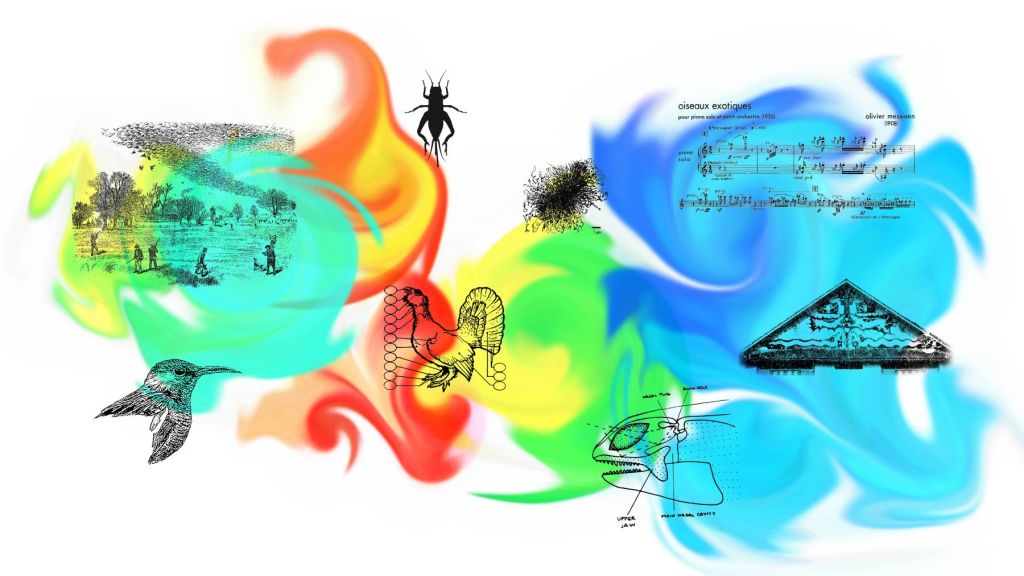
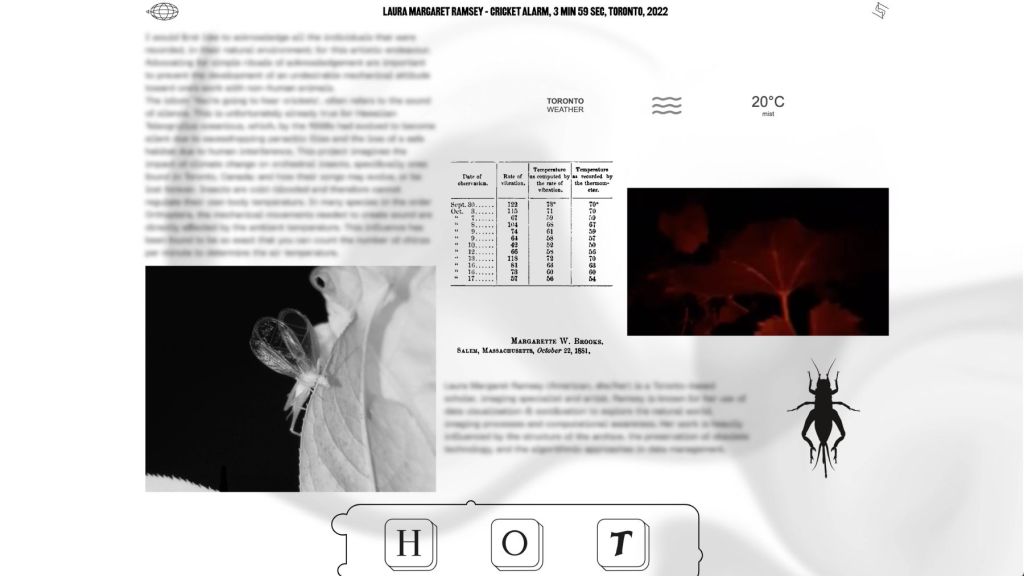
Learning more about the project, Fragments of Sonic Extinction appears to be oriented towards interpretation and imagination. These approaches support multiple outcomes and infinite possibilities for presenting different arguments and points of view on environmental issues. But how does this project negotiate artistic subjectivity, critical analysis and scientific debates?
For the artist, these are works of art that make no claim to truth in the scientific sense but hijack truth as a complex aesthetic level that also records contradictions: To paraphrase Theodor W. Adorno here: there is a close connection between art and society, whereby, on the one hand, all the problems of the time enter art, and on the other hand, it is the works of art that have the capacity to criticise the dire state of society without having to engage with it themselves. This is precisely what makes them resilient. However, the truth content here cannot be reduced to a single term but is distilled from the works by means of criticism and interpretation.
Thus, the contribution’s complex interplay and gaps in and between artworks bring up the potential for insight; however, these potentials are only opened up by an activated and critical viewer. I have explicitly asked very diverse actors with complex practices to contribute new sound works conceived specifically for the project: e.g. Jay Glass Dubs (Athens) composes electronic music with a conceptual focus on dub, and Nursalim Yadi Anugerah (Pontianak) is a classically trained composer who works with indigenous instruments such as the kadelek in the Indonesian context.
Mitchell Akiyama is a sound artist and researcher teaching in Toronto, Laura Margaret Ramsay is a visual artist specialising in data sonification. I myself studied philosophy with a focus on aesthetics and critical theory for six years before art school. Only the actors’ diverse backgrounds and contexts can create an image that does justice to the complexity of sonic extinction and can initiate new debates, including academic ones.
When examining Fragments of Sonic Extinction in a cultural setting where environmental discourses are disseminated using holistic theories and practices, it appears the project is rooted in ideas of subjectivity and fragmentation as methods for creative engagement with anthropogenic events. Therefore, highlighting the interconnection and dependency of singular entities within whole organisms and biological structures.
Regarding the ideas of subjectivity and fragmentation working within such a context, Liebfried tries to be very inductive rather than constructing deductively in depth from a particular holistic understanding. For him, it’s a mapping of the fields, a negotiation of case studies which does lead to a subjective and fragmentary understanding of nature and the fluctuating environment of the planet, not by choice but by necessity. The approach is almost forensic.
The artistic reinterpretation of natural phenomena and events is a strategy that humanity has always used to place its existence in a logical, spiritual and aesthetic context. It is, therefore, not surprising that humans as a species turn to what is threatened or already lost to give meaning to all that is left. What remains may only be collective fragments threatened with final extinction.
Looking into other aspects of the project, it seems its mission is to raise awareness of the consequences of climate change by highlighting environments at risk of extinction, if not already disappeared. And what about the political agency of the project and the challenges of disseminating web-based works in a digital social landscape dominated by for-profit content of primarily entertainment value?
Liebfried shares that he tries not to communicate primarily and superficially politically, as he’s very interested in initiating dynamic processes and does not try to define a clear goal. But founding an archive and encyclopaedia that slowly builds on a collective approach is, for him, a possible way to define a politically effective structure that does not follow a particular narrative or interpretation but a decentralised understanding of power, sovereignty and responsibility.
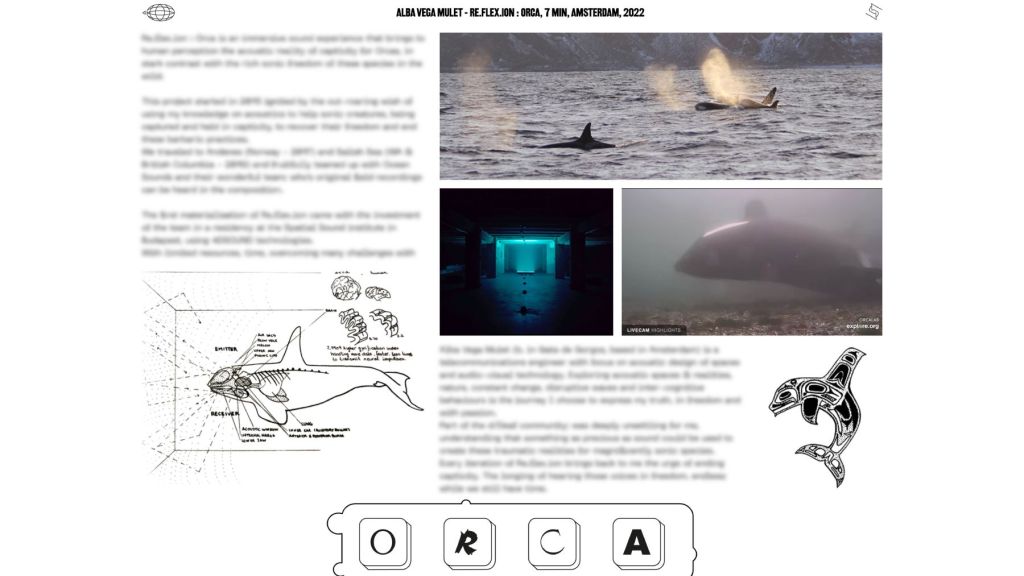
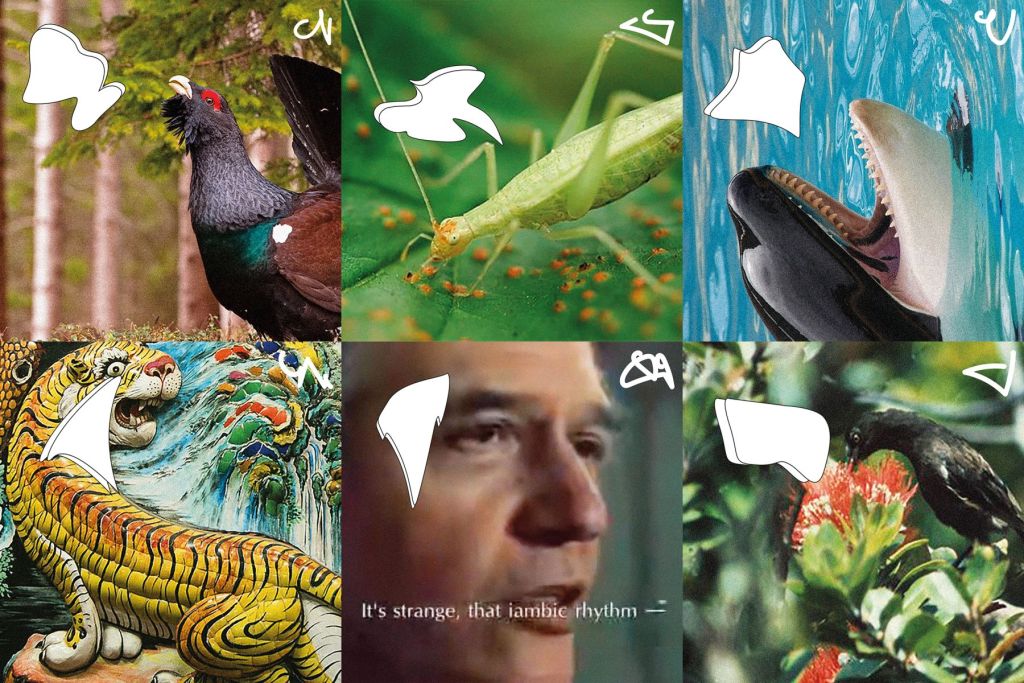
Perhaps, at some point in the future, Liebfried imagines, Fragments of Sonic Extinction can grow into a platform for critical enlightenment and emerging resistant aesthetics that, above all, create awareness about the fragility and vulnerability of ecological contexts.
I see preservation as an active, multi-voiced interplay of historical and speculative thinking. A significant advantage of the web-based platform is that global polyphony is possible. In the first edition, there are already contributions from Indonesia, to Greece to Canada. However, it is challenging to draw the attention of economies to it. For example, social media do not want to emphasise the fragile and ephemeral but the sensational.
Calls for environmental accountability, agency for political pressure and social change are finding more space in the social discourse. One interesting example is how drag queen Pattie Gonia is redefining the queer outdoors by engaging with local charities, companies and queer communities to make the outdoors accessible to minorities while actively finding ways to protect, preserve and safeguard the environment so greatly at risk today.
On how web-based projects like Fragments of Sonic Extinction can provide similar outcomes to engage with communities not only online but also offline, and in the field, the artist discusses this can definitely be a future development of Fragments of Sonic Extinction, whereby it will be necessary to take the project out of the internet landscape and transform it into analogue forms such as lectures, radio shows, listening stations, listening sessions etc. To directly address a physically tangible community. Direct awareness about environmental issues can only come through direct and multidimensional dialogue.
Projects such as this one, nevertheless, present their creative challenges, especially when they involve several collaborators and contributors. Liebfried agrees that he has been caught in an endless communication loop between a dozen time zones and people for the past five months: this is definitely not what I imagined as artistic work years ago.
However, over time he’s learned not to distinguish between artistic and curatorial work, between artistic direction and artistic creation. I do what is necessary to discuss specific issues I’m interested in. I kind of became used to being on all sides at the same time. So, I know too well that the biggest challenge of good artwork can often be organisation and communication. For me, it is central not to be in the foreground but to let others speak and give others a platform.
I like to think of my projects as playgrounds. There are a few lines and rules that I have to set if I want to make them accessible for interaction, but there are also many free and interpretable spaces in between for collaborators, contributors, visitors, accomplices and unforeseen events. I like to share responsibility and keep the work dynamic and open-ended. Therefore, I often use instructions with suggestions for interaction or notations that guide the performers but do not strictly direct them. I strongly prefer maieutics (the Socratic method or midwifery), a form of a collaborative dialogue between individuals based on asking and answering questions to provoke critical thinking and develop shared ideas, articulations and conditions.
With a few last words, Liebfried concludes that despite maybe sounding very romantic, he doesn’t want to imagine what an utterly silent forest feels like where there is no sonic dialogue between non-human actors, where there is no sound of birds calling and answering.

